
|   |

|   |
 e-mail: sunilkothari1933@gmail.com Early memories of encounters with Birju Maharaj July 25, 2020 No memories of Birju Maharaj can be recalled without the period of fifties when after Independence, by 1953 the Government established three Akademis in Delhi - Sahitya Akademi, Lalit Kala Akademi and Sangeet Natak Akademi (SNA). The role assigned to SNA was to preserve, perpetuate and revive classical dance forms, archive them, along with folk, tribal, ritual dances and classical music in its multiple forms, and similarly for theatre, regional and traditional, traditional which were alive and regularly performed all over India; to honour the greatest artistes in all these fields and maintain an archive. 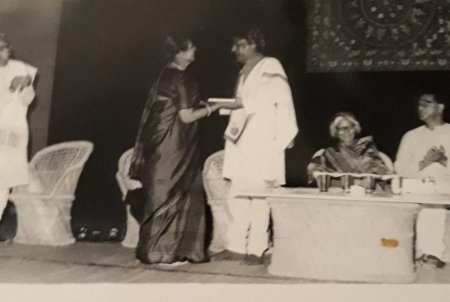 Sumitra Charat Ram gives copy of Kathak book to Birju Maharaj 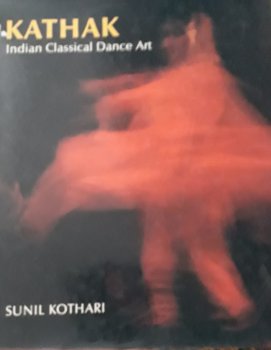 Book cover It was during the early fifties that besides the Ministry of Culture, some enlightened and wealthy families in Delhi also extended their patronage to the dancers and musicians. Among them foremost was Lala Sriram Bharatram. In their family was the daughter-in-law Sumitra Charat Ram, wife of Charat Ram, who started Jhankar, a small institution to present dancers and musicians. Fond of classical music and dance, Sumitra arranged performances of Pandit Ravi Shankar and Ustad Hafiz Ali Khan, father of Ustad Amjad Ali Khan, the sarod maestro. Naina Devi, daughter of Keshav Sen, great scholar, thinker, was trained in classical music. After her marriage into the royal family, she had settled in Delhi. Sumitra roped her in the activities she had started. It was a golden period of revival of classical dance and music. A galaxy of legendary artistes had assembled in Delhi. Communist leader P.C. Joshi's niece Nirmala Joshi was deeply interested in classical music. She was in touch with the Nawab of Rampur in whose court Lucknow gharana doyen Achhan Maharaj was in service with his young son, Birju, barely five years old. Nirmala was anxious that the best of the Lucknow gharana Kathak should be imparted to the young generation. 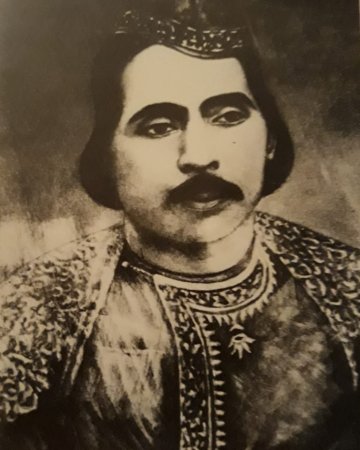 Bindadin 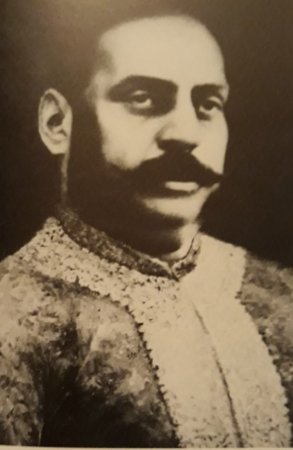 Kalka Prasad 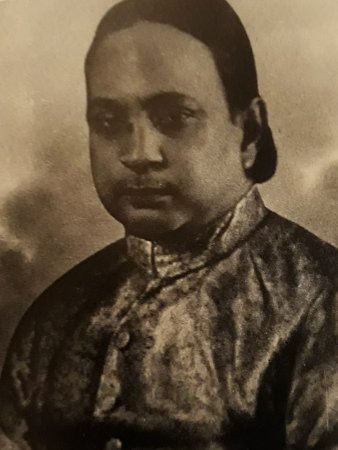 Achhan Maharaj Birju Maharaj as a prodigy had drawn the attention of the Kathak world in Lucknow. Of the Maharaj brothers, Achhan Maharaj, Lachhu Maharaj and Shambhu Maharaj were descendants of Kalka Prasad and his brother Bindadin Maharaj. Bindadin Maharaj was also a singer and had composed innumerable bandishes, thumris, and bhajans in praise of presiding deity Lord Krishna. This legacy was inherited by the Maharaj brothers. The three of them were vastly gifted, talented dancers and musicians. Achhan Maharaj's graceful dancing was sin qua non of Lucknow gharana. Lachhu Maharaj's style was known for its grace, and delicacy, whereas the youngest Shambhu Maharaj excelled in thumri singing and abhinaya. Among their children, Achhan Maharaj's son Birju Maharaj had displayed extraordinary ability to grasp the art of his father. It was most unfortunate that Achhan Maharaj passed away when Birju Maharaj was barely eight or nine years old. But as luck would have it, his mother remembered the innumerable thumris, songs and bhajans and taught them to young Birju. She also sent him to learn from his uncles Lachhu Maharaj and Shambhu Maharaj. Birju Maharaj studied as much as he could. His performances in various conferences, be it at Allahabad or Benaras, were acclaimed and Birju Maharaj already joined the ranks of prominent dancers. Nirmala Joshi and Sumitra Charat Ram were anxious to bring him to Delhi and nurture Birju Maharaj further. It was Dr. Kapila Vatsyayan who was studying Kathak under Achhan Maharaj, in order to repay the debt she owed him, went to Lucknow and brought Birju to Delhi and got him appointed as a young guru at the age of sixteen at Sangeet Bharati institute of classical music and dance. Often Kapila Vatsyayan has mentioned this fact in her several anecdotes. The climate for flowering of Kathak as a classical dance form was ripe in Delhi. Once the Bharatiya Kala Kendra was established, Sumitra brought the great musicians and Kathak maestros to Bharatiya Kala Kendra to teach - Ustad Hafiz Ali Khan, leading Dagar exponents of Dhrupad music, Naina Devi, among Kathak Gurus Shambhu Maharaj and later on Jaipur gharana Guru Sunder Prasadji who came from Mumbai after his school in name of Bindadin Maharaj was closed. Sumitra was keen to have both the styles of the Lucknow gharana and Jaipur gharana at Bharatiya Kala Kendra. It was much later that Bharatiya Kala Kendra was named after Lala Sri Ram and now is known as Sriram Bharatiya Kala Kendra. 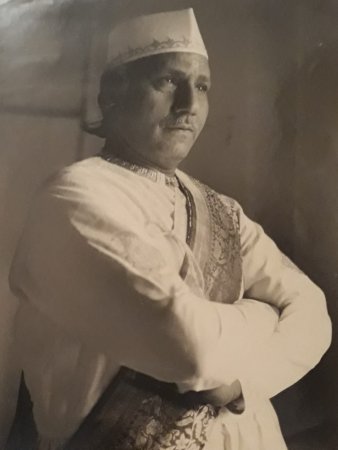 Guru Sunder
Prasadji
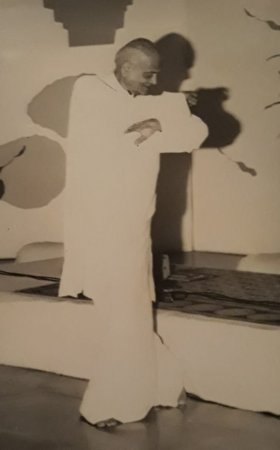 Mohanrao Kallianpurkar
Another major event took place in the year 1958. Sangeet Natak Akademi organized All India Dance Seminar and Festival from 31st March till 7th April at Vigyan Bhavan in New Delhi. It was a most historic conference when major leading pioneers of Indian classical dance, and also choreographers like Gul Bardhan, wife of Shanti Bardhan of Little Ballet troupe, Sachin Shankar, Menaka Tagore (Hathisingh), wife of Soumendra Nath Tagore, Shanti Dev Ghosh, disciple of Gurudev Rabindranath Tagore, Balasaraswati, her mother Jayamma, Rukmini Devi, Sanskrit scholar Dr. V.Raghavan, Kamala Devi Chattopadhyaya, scholar and critic G.Venkatachalam, novelist, writer and editor of Marg magazine Dr. Mulk Raj Anand, his wife Kathak dancer Shirin Vajifdar, her sister Bharatanatyam dancer Roshan Vajifdar, painter Svetoslav Roerich, film star Devika Rani, Hungarian art critic/archeologist Dr. Charles Fabri, Mrinalini Sarabhai, Kathak guru and exponent Mohan Rao Kallianpurkar, Shambhu Maharaj, Lachhu Maharaj, young Birju Maharaj, Maya Rao, Dr. Kapila Vaystayan, Kumudini Lakhia, Rohini Bhate, Manipuri Guru Amubi Singh, Atomba Sharma, Guru Bipin Singh with his four disciples the Jhaveri Sisters, from Odisha Kavi Chandra Kalicharan Patnaik, young guru Deba Prasad Das, founder of Kala Vikash Kendra for Odissi dance Babulal Doshi, Kathakali guru Gopinath with his two daughters, Chatunni Panicker, Guru Kunju Kurup, Kuchipudi scholar Vissa Apparao, Banda Kanakalingeswar Rao, young Kuchipudi dancer Kanchanamala, Dr. BV Karanth a Yakshagana artiste from Karnataka, scholar and authority on Sattriya dances of Assam Dr Maheswar Neog and gurus from Kamalabari Sattra, Maniram Dutta Mukhtiyar Gayan and Maniram Mukhtiyar Bayan and a galaxy of artistes, connoisseurs, and rasikas were present. I had attended the conference with my mentor and guru Prof. Mohan Khokar. It was in this seminar on one morning that Mohanrao Kallianpurkar who was principal and pradhan guru at Maris College in Lucknow presented his erudite paper on Kathak. It was the most systematic arrangement of order of items to be presented in solo Kathak recital. Tode, tukde, tihai, paran, amad, parmelu, sangeet ka tukda, kavits, chaturang and several other aspects of Kathak were explained. 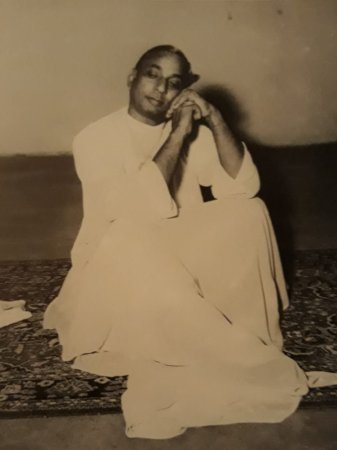
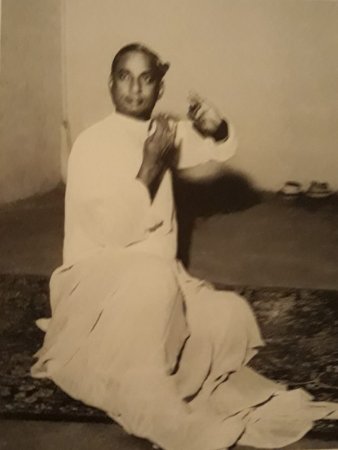
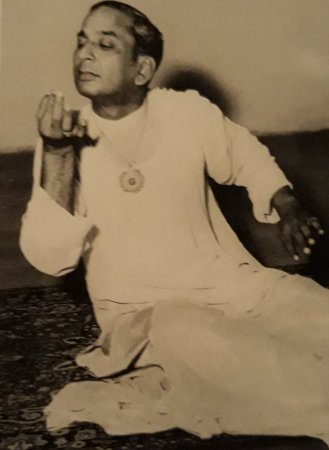
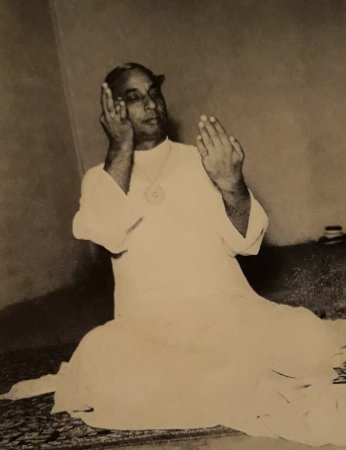
Photos: Govind Vidyarthi But the high moment was when for abhinaya, Shambhu Maharaj sat on the stage, covering his feet with a shawl as was the tradition and rendered thumri Kaun gali gayo Shyam, bata de guyian kaun gali gaya Shyam? It was here that for the first time, I saw what is called Upaj, improvisation in Kathak when enacting abhinaya to pada, song, bhajan, a thumri - what is known in technical parlance as sanchari bhavas. Shambhu Maharaj had a booming but melodious voice. Sitting next to him was his elder brother Lachhu Maharaj and young nephew Birju Maharaj and Maya Rao, a disciple of Shambhu Maharaj from Bangalore. Shambhu Maharaj unleashed a series of upaj and expressions for the word gali. Showing the parting of hair, he showed palm and various lines on the palm. He took ittar and smelt it, inhaling the fragrance suggesting if Krishna went that way to his heart. He picked up a bottle of surma, and applied to his eyes, suggesting if Krishna went through the eyes, the white of the eye is the path and the iris of the eye is Krishna. He picked up black kajal and applied on the corner of the eyes. We were all spellbound watching this aspect of his spontaneous upaj to Gokul dhundhi Mathura dhundhi Braj me aa gayi Shyam, and touched his dark black hair suggesting both Krishna and dark of the evening. 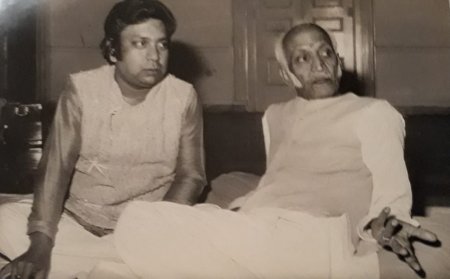 Birju Maharaj with Lachhu Maharaj 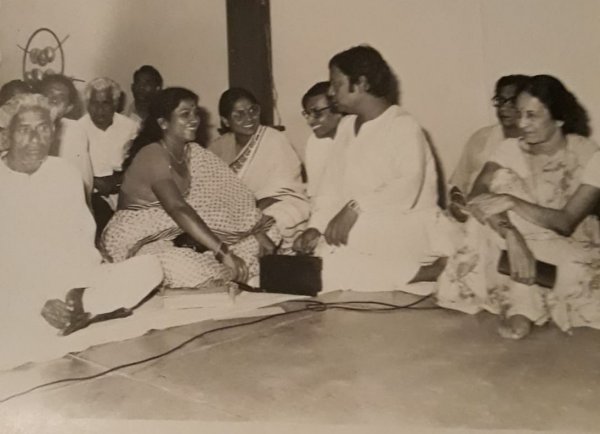 At Kathak seminar in Bhopal (1982) with Kumudini Lakhia, Rashmi Vajpeyi and Rohini Bhate Photos: Sunil Kothari Dance Collection This miracle of upaj ang, an important aspect of abhinaya has remained carved in my memory after 62 years when I am recounting this. Birju Maharaj also watched as we did and was also spellbound. But I think on reflection that he must have grasped this aspect of upaj watching Shambhu Maharaj and later on watching abhinaya of Lachhu Maharaj. Birju Maharaj used to perform in Mumbai at the invitation of Sur Singar Samsad for Haridas Sammelan prior to All India Dance Seminar held in 1958. I recall seeing him performing in Mumbai. Brij Narain, the director of Sur Singar Samsad, used to send me to the station to receive Birju Maharaj. Those were my first meetings with Birju Maharaj which over the years became regular whenever he visited Mumbai to perform. And later on, whenever I visited Delhi. For All India Dance Seminar and Festival, Lachhu Maharaj was asked to choreograph in Kathak a dance drama - it was then called ballet - Bhavabhuti's 'Malati Madhav'. Kumudini Lakhia played the role of Malati and Krishna Kumar the role of Madhav. Birju Maharaj had a small role in the ballet. The music was composed by the elder Dagar. 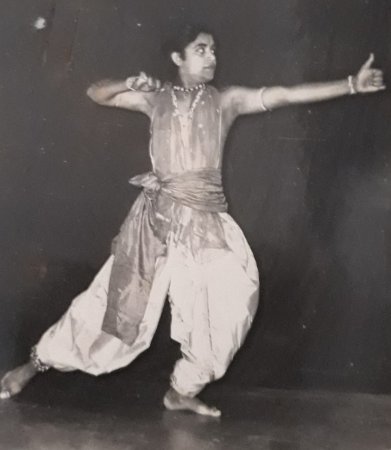 Krishna Kumar 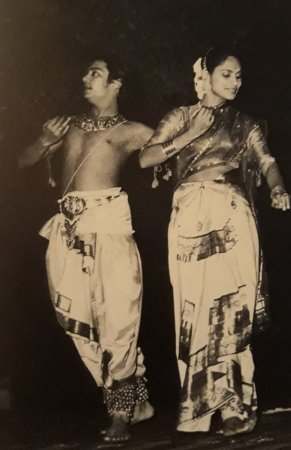 Birju Maharaj & Kumudini Lakhia in Malati Madhav  Kumar Sambhav choreographed by Birju Maharaj Photos: Sunil Kothari Dance Collection Also for Bharatiya Kala Kendra, dance dramas were choreographed. For 'Kumar Sambhav' ballet, Birju Maharaj played the role of Kamadeva and Kumudini Lakhia that of Rati. It is one of the finest choreographies and fortunately it is recorded and preserved in the archive of Sangeet Natak Akademi. 'Kumar Sambhav' toured all over India and was also presented in Moscow. It was in 1962 that Sangeet Natak Akademi established Kathak Kendra as a National Academy of Kathak in Delhi. Along with Shambhu Maharaj, Birju Maharaj was also engaged to teach Kathak. Till then for some years in the premises of Bharatiya Kala Kendra the classes of Kathak Kendra were held. Then the classes were held at Bhawalpur House in Kathak Kendra's own premises. During those years, a series of young dancers joined Kathak Kendra. Already at Bharatiya Kala Kendra were Kumudini Lakhia, Kamala Kirtikar, Uma Sharma, Bharati Gupta, and Urmila Nagar. Later on a batch of young dancers including Saswati Sen was studying under Reba Vidyarthi, a disciple of Achhan Maharaj. Among the male dancers were Pratap Pawar, Tirath Ajmani, Pradip Shankar and others. They all formed the dancers of the Kathak Repertory. Birju Maharaj choreographed several dance dramas in those years. Some of them I recall. Earlier in 1957, 'Kathak ki Kahani' with choreography and music by Shambhu Maharaj was re-adapted by Birju Maharaj. As a matter of fact, it was choreographed to celebrate the centenary of 1857 dedicated to the memory of Wajid Ali Shah. The original version included Maya Rao, Bela Arnab and Keshav Kothari, who later on joined Sangeet Natak Akademi and became the director of Kathak Kendra and finally secretary of Sangeet Natak Akademi. This ballet in shorter version, Shahi Mehefil, was often presented. In 1960, 'Shane Awadh' was choreographed by Birju Maharaj for which senior Dagar brothers had composed music. It was supervised by Shambhu Maharaj.The script was written by B.P. Shungloo and lighting was done by Tapas Sen. It was based upon the life and works of Wajid Ali Shah. The other dance dramas were Dalia, Gitopadesh, Krishnayan, Malavika Mitra, Roopmati Baj Bahadur, Hori Dhom Machori, Katha Raghunath Ki, Gita Govinda, Habba Khatun, Laya Parikrama, Nayika, Nrita-keli, Maun Sakshi. The list is quite long. In the eighties, Birju Maharaj choreographed Nritya-archana, a Thumri Malika, Atithi, Nrityanjali, Ang Taranga, Yati Darshana, Samanvaya, Madagunjana and others. 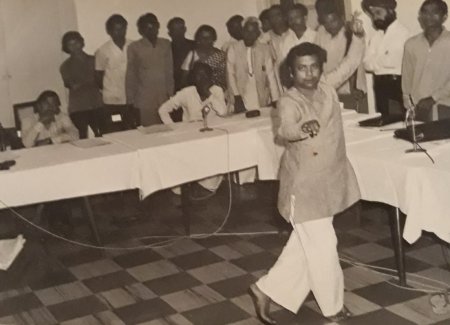 Birju Maharaj demonstrates salient features of Lucknow gharana at Kathak seminar held at Kathak Kendra in 1978 Birju Maharaj's work is prolific and historic. Earlier, Madam Menaka had in the thirties created various choreographic works. Later on during Keshav Kothari's directorship of Kathak Kendra, he had encouraged Munna Shukla, Durgalal and others to create innovative choreographic works. The period from 1980s for a decade was a most productive period in the history of Kathak Kendra. The annual Kalka Bindadin Mahotsav also featured choreographic works of Kumudini Lakhia and Rohini Bhate. In Birju Maharaj's illustrious long and chequered career, few principle figures have played an important role - Dr. Kapila Vatsyayan brought him to Delhi, Sumitra Charat Ram, Nirmala Joshi, Shambhu Maharaj and Lachhu Maharaj, Keshav Kothari and Kumudini Lakhia. Maharaj has often acknowledged their contribution in his growth. Besides the traditional training and music, it was mainly Keshav Kothari and Kumudini Lakhia who showed Birju Maharaj the several aspects of presentation on the stage of Kathak. Maharaj's own ability to grasp the finer points and their suggestions found felicitous expression in his solo presentations and also in the dance dramas and group works he created. Birju Maharaj grew up in a renaissance period of dance in India. The institutional support he received at the helm of Kathak Kendra was most important. As a teacher, his observations of the way body should move were most significant. The lines, the movements of the arms, saushthava, the erect body, and how grace was an inherent part of the performance were emphasized by him. He would take into account the body of each of his disciples and according to his or her proportion, structure he would create the movements which in its overall execution of movement would look graceful and aesthetic. Earlier there was not much consciousness of 'ang banaana', which he developed removing all crudities of movements and just arriving on the 'sam'. Often, one could see the grace and delicacy of a Mughal miniature painting in his execution. The natural feminine grace was maintained in execution of movements of female dancers and in case of male dancers enough vigour was emphasized to avoid effeminacy at any cost. He did not approve of effeminate projection. To sustain the salient features of Lucknow gharana viz., nazaakat (delicacy) and khubsoorati (beauty) were considered the hallmark of Birju Maharaj's training. There is what is called sukun, a feeling of repose in his dance. Razzle dazzle were not substitute for virtuosity. In his case there was an intuitive sense of proportion and what is called auchitya. Since traditionally a Kathak dancer can engage in conversation with the audience in order to draw attention to the nuances and special features of Kathak, Birju Maharaj used it with great discretion. He would draw attention gently in a persuasive manner which would not be interpreted as 'show off'element. If someone in the audience were to create some disturbance, he would gently say: 'Meharbani kar ke rang me bhang mat karna'. He would make each member of the audience feel that he is specially dancing for him. That intimacy he would establish in a trice. For instance, when in the beginning he would perform uthan, the way he would execute it, the audience would be mesmerized. His foot falls, tatkar, are never loud. The way he would strike the floor would serve as an example to his disciples how to strike the stage. His nritta, pure dance, as in any Kathak recital of late that plays major part, is always clean and enjoyable. His padhant, recitation of the mnemonic syllables, is an example for dancers on how to recite the bols. The musical quality of the bols becomes self evident. In short, his nritta always delights audiences. 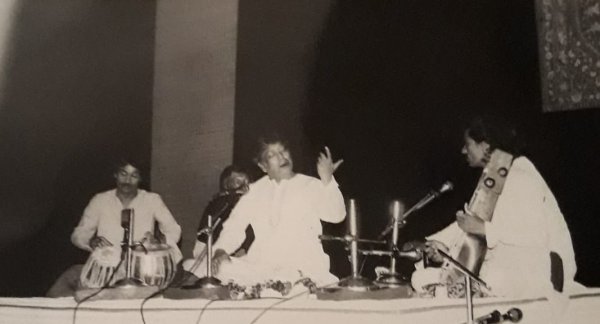 Singing himself, Birju Maharaj renders abhinaya to a Surdas pada at Kamani Hall when the book on Kathak was released in 1989 Photo: Sunil Kothari Dance Collection Since he is gifted with a melodious voice and sings when presenting an abhinaya number to a thumri, the enunciation of the words is easy to follow. There is a unique confluence of bhava, raga and tala. His abhinaya is suggestive, economical and appealing. To display the subtle feminine gestures in correct manner places him in a class of his own. How he enters the psyche of a nayika is a miracle. There is never overacting. But a little gesture of an arm to be released from the Nayak, often Krishna, the chhed chhad, Krishna's pulling nayika's pallu, holding her hand and trying to move, the breaking of bangles, picking up the small pieces, or when going to fetch water, breaking the pots, such gestures are delicate and often one gets a feeling that the nayika loves it. One gesture of the eye and also of the elbow would convey a lot. The subtle feelings of love not to be displayed in public, but has to be automatically understood with expressions on face and in the eyes offer audience rasanubhava, relish. In oft repeated makhan chori, stealing of butter and caught red handed, the begging of forgiveness with large eyes moves hearts of audience at the ever enchanting mischief of Krishna. The gestures of young Krishna wearing expressions of a bhola bhala, innocent child, are performed with extreme delicacy. And the artificial anger at Krishna's teasing her, resulting in the end in reconciliation comes easy to Birju Maharaj. The roles alternate with consummate artistry. Birju Maharaj as a poet writing poems in traditional format of Brijbhasha with images, metaphors commensurate with the style are enjoyable. Add to it, his own melodious, soulful singing. And you have the best from Birju Maharaj. He has a sense of humour and often takes up the way the birds speak and communicate and transforms into small pieces which are na´ve and delight the audience. However and how many times the audience has seen them, they often do farmaish for presenting them. The playfulness of the piece is enjoyable; though many of his admirers do not want him to perform it, Birju Maharaj knows that there is a large audience which wants the entertainment. 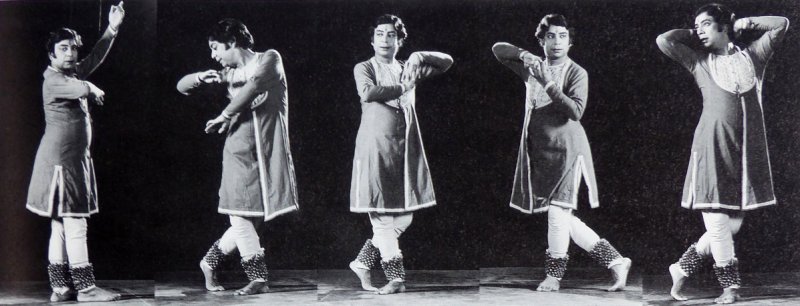 Gat Nikas by Birju Maharaj 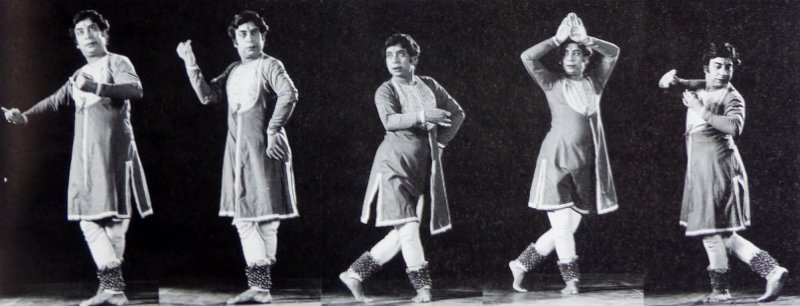 Gat Bhav by Birju Maharaj Photos by Avinash Pasricha Source: Book on Kathak by Sunil Kothari Now that he has turned 80 plus, he has become mellow, affectionate and permits his ever growing audience to take selfies with him. His disciples adore and worship him. The workshops he conducts with help of Saswati Sen, his principal disciple, are overbooked. Even if those who register know that they may not receive individual attention, the way Maharaj would move and execute a toda or tukda would be enough for them to remember it for their lifetime. I would like to end this article with Birju Maharaj's quotation about tala and laya. He gives example of sixteen beat tala. The sixteen beats are the gopis in search of Krishna who is the sam. With such simple and poetic way, he makes us enter the heart and art of Kathak.  Dr. Sunil Kothari is a dance historian, scholar, author and critic, Padma Shri awardee and fellow, Sangeet Natak Akademi. Dance Critics' Association, New York, has honoured him with Lifetime Achievement award. Responses * Beautiful to read and so much learnt from one article based on depth and experience. I hope to share with my 8 year old daughter in ways she might understand. Thank you for this great service to those who did not and will never experience what you have experienced. (17 January 2022) Post your comments Please provide your name and email id when you use the Anonymous profile in the blog to post a comment. All appropriate comments posted with name and email id in the blog will also be featured in the site. |